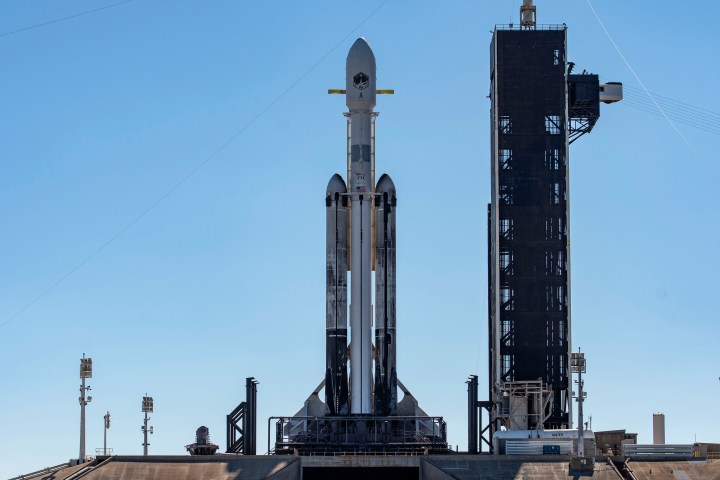Tomorrow will see the fifth launch of SpaceX’s heavy-lift vehicle, the Falcon Heavy. Performing a classified launch for the US military, the rocket will take off from Launch Complex 39A (LC-39A) at Kennedy Space Center in Florida in a mission called USSF-67.
The launch had originally been scheduled for today, Saturday, January 14, but was pushed back by one day with no reason given. The launch is now scheduled for 5:56 p.m. ET (2:56 p.m. PT) on Sunday, January 15. If you’d like to watch along at home, we have the details of how to watch below.
What to expect from the launch

SpaceX has been busy recently preparing for the first launch of its Super Heavy/Starship vehicle, but before the company’s most powerful rocket yet takes to the air it will make another launch of its current most powerful rocket, the Falcon Heavy.
As a heavier vehicle than the company’s standard Falcon 9 rocket, which has one booster, the Falcon Heavy has two side boosters. Once the stages of the Heavy have separated these two boosters will return to Earth to land and potentially be reused. The livestream of the launch will include the landing of these two boosters at landing zones at Cape Canaveral designated LZ-1 and LZ-2.
As for the mission payloads, SpaceX is sharing little about what the payloads are. There are two payloads for the U.S. Space Force that are going into geostationary orbit, and according to NASA Spaceflight they consist of a main payload, the Continuous Broadcast Augmenting SATCOM 2 (CBAS-2) satellite, and a secondary payload, the Long Duration Propulsive ESPA – 3A (LDPE-3A) platform. The former is a military communication satellite, but not much is known about it beyond that. The latter is carrying experimental and prototype payloads.
How to watch the launch
SpaceX will be streaming the launch on its website via YouTube, which you can watch using the video embedded at the top of this page. The livestream should become available around 15 minutes prior to launch.
You can also head to SpaceX’s webpage for the launch, which has all the details on the event and will have the video link available as well.
Judging by SpaceX’s typical livestreams, as the launch is scheduled for just before 6 p.m. ET (3 p.m. PT) then the stream should begin around 5:45 p.m. ET (2:45 p.m. PT). You can also follow SpaceX’s Twitter account for live updates on the launch.
Editors' Recommendations
- Watch SpaceX’s Crew Dragon take one of its shortest journeys on Thursday
- SpaceX’s Falcon 9 rocket just completed a milestone mission
- SpaceX all set for a record-breaking rocket launch on Friday
- Watch SpaceX blast its megarocket engines in spectacular test
- SpaceX shares stunning night shot of its Super Heavy booster



